Struggling to find a bathtub that is durable, stylish, and easy to clean? The wrong choice can lead to costly repairs and unhappy clients. Solid surface might be the perfect solution for you.
A solid surface bathtub is made from a composite material. It blends resins and natural minerals to create a non-porous, durable, and seamless tub. This material naturally resists stains, mold, and bacteria, making it exceptionally hygienic and easy to maintain over its long life.
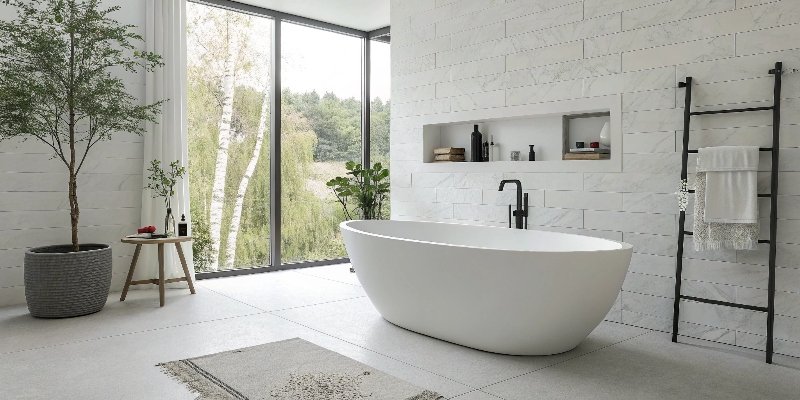
As an export manager with 13 years in this industry, I've seen countless materials come and go. I talk to procurement managers like you every day, and I understand the pressures you face. You need a product that not only looks great but also performs flawlessly and delivers long-term value. You can't afford a material that fails, stains, or creates maintenance headaches for your clients down the line. That's why I want to share my direct experience with solid surface. In the following sections, I’ll break down exactly what makes this material a superior choice for so many projects. Let's dig into the details so you can make an informed decision.
What material is best for a freestanding bathtub?
Choosing a material for a freestanding tub feels overwhelming. The wrong one can be too heavy, feel cold to the touch, or show wear and tear quickly, causing project delays and budget issues.
The "best" material depends on your project's priorities. However, solid surface is a top contender for its excellent balance of design flexibility, durability, heat retention, and a manageable weight. It delivers a premium stone-like feel without the extreme installation challenges.
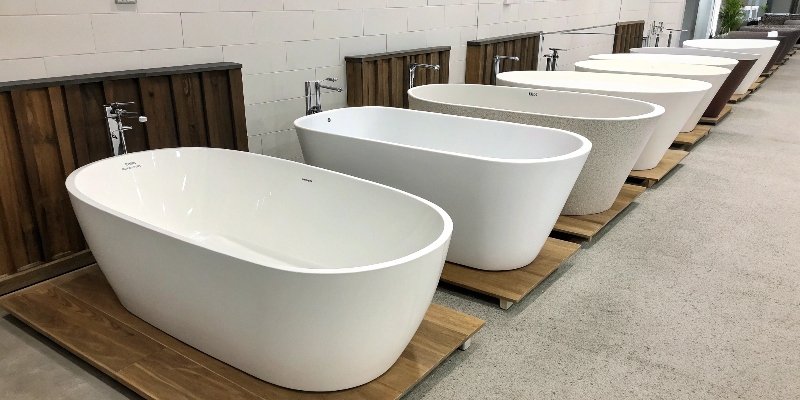
From my years of experience, I know that choosing the right material is about balancing a few key factors. Architects want design freedom, contractors want easy installation, and clients want lasting quality. Solid surface often hits the sweet spot for everyone. I once worked with a developer on a high-rise luxury apartment building in the U.S. They originally specified cast iron tubs but ran into structural engineering issues because of the weight. We showed them our solid surface models. They were thrilled because they got the high-end, solid feel they wanted without needing to reinforce the floors, which saved them a huge amount on the construction budget.
Comparing Freestanding Bathtub Materials
Let's break down the most common options. You need to see how they stack up on the points that matter most to a procurement manager: cost, durability, and user experience.
| Material | Durability | Heat Retention | Repairability | Weight |
|---|---|---|---|---|
| Solid Surface | Very High | Excellent | Excellent | Moderate |
| Acrylic | Good | Good | Limited | Light |
| Cast Iron | Excellent | Good | Poor | Very Heavy |
| Stone Resin | Excellent | Excellent | Good | Very Heavy |
Solid surface truly excels in heat retention. The material holds the water’s warmth for longer, which is a feature homeowners love. For a commercial project like a hotel, this translates to a better guest experience. Our manufacturing process, which aligns with China's push for energy-efficient products, is designed to maximize these thermal properties. It’s a small detail that makes a big difference in a luxury setting.
What is the best surface for a bathtub?
A bathtub’s surface determines its lifespan and hygiene. A porous surface quickly absorbs stains and harbors bacteria, looking old and dirty. This leads to customer complaints and high cleaning costs.
The best surface for any bathtub is one that is completely non-porous. A non-porous surface, like that found on solid surface tubs, prevents anything from seeping in. This means no stains, no mold, and simple cleaning with basic products.
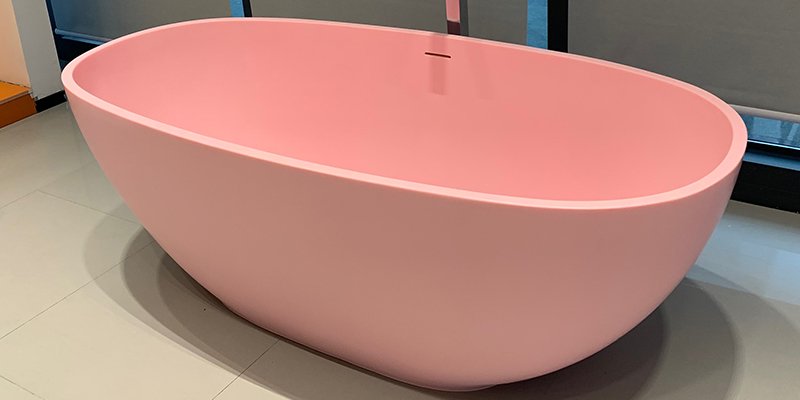
I cannot overstate the importance of a non-porous surface. In my role, I often discuss technical specifications with project managers for large-scale developments, like hospitals or hotels. For them, hygiene is not just a preference; it's a requirement. A porous tub made from lower-quality material can become a breeding ground for germs, which is simply not acceptable. This is where solid surface really shines. Because the material is solid all the way through, there is no top gel coat to wear away and no pores for dirt to get into.
The Importance of a Non-Porous Surface
The term "non-porous" means the material has no tiny holes or openings. This is a critical feature that directly impacts maintenance and longevity.
Here’s what it means in practical terms for your projects:
- Stain Resistance: Spilled hair dye, bath oils, or colored soaps won't leave a permanent mark. They simply wipe away.
- Hygiene: Without pores, there is nowhere for mold, mildew, or bacteria to grow. This is a huge selling point for health-conscious consumers and commercial clients.
- Easy Cleaning: You don't need harsh, abrasive chemicals. A simple cloth with mild soap and water is all that's required to keep the tub looking brand new.
As a manufacturer in China, we are part of a national push towards producing high-value, advanced materials under initiatives like "Made in China 2025." This encourages us to perfect the technology for creating a flawless, non-porous finish. Our quality control is intense because we know this single feature is what separates a premium product from the rest.
Which is better solid surface or acrylic freestanding tub?
Solid surface and acrylic tubs can look very similar at first glance. But making a choice based on looks alone is a mistake. Their underlying structure and performance are completely different.
Solid surface is better because it's a solid, homogenous material. This makes it more durable, easier to repair, and provides a premium, stone-like feel. Standard acrylic tubs are a thin layer of acrylic over a fiberglass base, which can flex and is difficult to repair if scratched deeply.
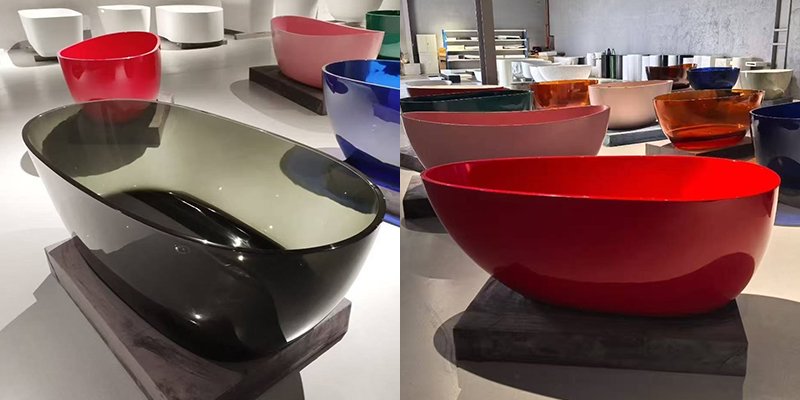
I talk to buyers who are weighing these two options all the time. The price point of acrylic is tempting, I get it. But as a procurement manager, you have to think about the total cost of ownership. I had a client, a procurement director for a hotel chain, who initially chose acrylic tubs for a new property to save on the upfront cost. Within two years, their maintenance teams were constantly dealing with complaints about flexing tubs and visible scratches they couldn't fix. For their next project, they switched to solid surface. The upfront investment was higher, but they eliminated those maintenance calls, saving them money and protecting their brand's reputation in the long run.
A Head-to-Head Comparison
Understanding the fundamental difference in how they are made is key. An acrylic tub is vacuum-formed from a thin sheet of plastic, then reinforced with fiberglass. A solid surface tub is cast in a mold as one solid piece.
| Feature | Solid Surface | Acrylic |
|---|---|---|
| Composition | Solid composite of minerals & resin | Plastic sheet over fiberglass |
| Durability | Higher impact and scratch resistance | Can scratch and discolor over time |
| Feel & Weight | Heavy, substantial, stone-like feel | Lightweight, can feel flexible |
| Repairability | Scratches can be buffed out easily | Deep scratches are often permanent |
| Heat Retention | Excellent, keeps water warm longer | Good, but generally less than solid surface |
The difference is one you can feel. When you tap on an acrylic tub, it can sound hollow. When you tap on solid surface, it feels solid and substantial, like stone. This premium feel, combined with its superior durability and repairability, is why it's positioned as a higher-end product. That's the value you're investing in.
Is solid surface scratch-resistant?
You’re investing in a beautiful new bathtub for a high-end project. Naturally, you worry about scratches from dropped items or abrasive cleaning. Damage can ruin the entire look of a luxury bathroom.
Solid surface is highly durable and scratch-resistant, but not completely scratch-proof. However, its greatest strength is its renewability. Minor scratches and scuffs can be easily buffed out by hand, perfectly restoring the original smooth, matte finish.
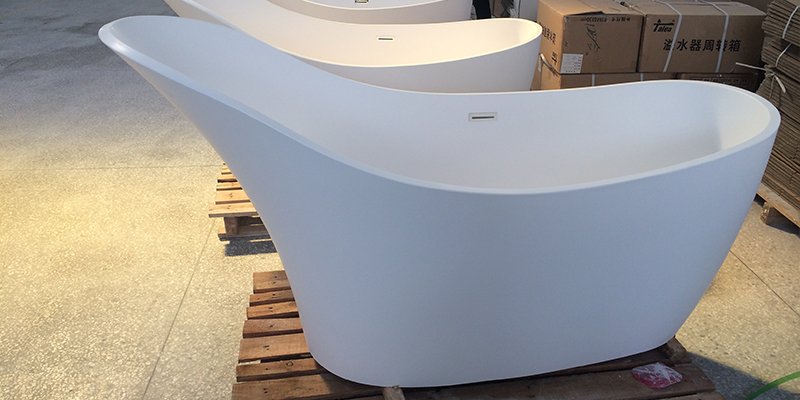
Honesty is critical in building trust with my clients. So, I always tell them upfront: any material can be scratched if you try hard enough. The real question is, what happens after it's scratched? With materials like enamel or acrylic, a deep scratch is a permanent flaw. You either live with it, or you replace the whole tub. This is where solid surface is completely different and, in my opinion, far superior for any project where longevity matters. Its repairability is a game-changer.
Understanding Durability and Repairability
The reason you can repair solid surface so easily is because it is the same material all the way through. There is no thin top layer to scratch through. If a scratch appears, you are just seeing more of the exact same material underneath.
How to repair a minor scratch:
- Identify the area: Clean the surface to see the scratch clearly.
- Light Sanding: Use a fine-grit wet-and-dry sandpaper (we usually supply a small pad for this) and gently sand the area in a circular motion.
- Buffing: Use a slightly coarser abrasive pad (like a Scotch-Brite pad) to blend the finish.
- Wipe Clean: Wipe the area with a soft cloth and water. The surface will look brand new.
This simple process is a massive advantage for commercial properties like hotels and rental apartments where wear and tear is inevitable. Instead of costly replacements, a quick fix by the maintenance team keeps the tub in perfect condition. This focus on producing durable, repairable, and therefore more sustainable goods is also supported by China's environmental trade policies, which encourage a circular economy. It’s a smarter investment for you and a better product for the end user.
Conclusion
Solid surface bathtubs offer an excellent combination of durability, style, and easy maintenance. They represent a smart, long-term investment for any high-quality residential or commercial project.
